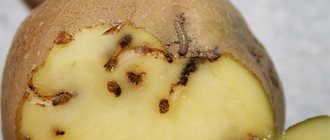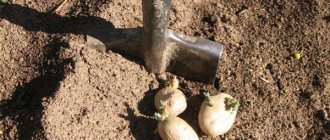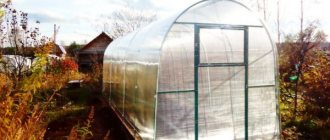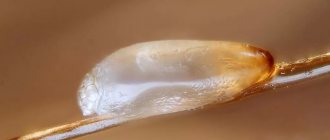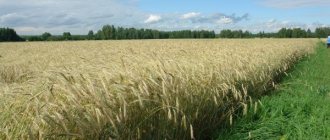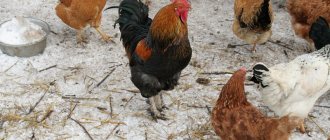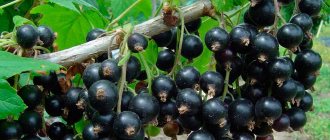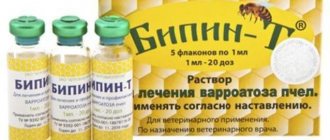Potato yield and its taste largely depend on how the soil was prepared. Experienced gardeners know this and begin work immediately after harvesting the crop, without postponing the event until the spring.
We’ll tell you what points you need to pay attention to when fertilizing the soil for potatoes in the fall. Let's talk about which substances can be added before winter, and which ones are best avoided at this time of year. We will give the consumption standards for organic and mineral fertilizers.
Why is it so important to fertilize the soil for potatoes in the fall?
During the autumn preparation of the soil, organic and mineral fertilizers can be added to it simultaneously, while in the spring it is recommended to use only mineral ones. As a nitrogen fertilizer, you can use urea, and not just nitrate, since during the time that will pass before planting potatoes, nitrogen from urea will have time to transform into an accessible form. Organic matter - half-rotted manure or compost - will have time to rot over the winter and become good food for potatoes. Fall application usually requires less fertilizer than spring application, which saves fertilizer. If you fertilize the soil for potatoes in the fall, this will save time in the spring, and you can immediately begin planting tubers.
Features of autumn feeding after harvesting
Fertilizers that are applied during the growing season are not suitable for autumn feeding, as they are used to accelerate growth, weight gain and maturation of the crop. Autumn fertilizers are needed to improve the soil structure in the garden. Therefore, after harvesting, the soil must be saturated with potassium and phosphorus, and nitrogen fertilizers must be left for planting and growing the vegetable.
Attention!
Some gardeners claim that the best fertilizer for autumn fertilizing is fresh manure, which will “ripen” during the winter. During crop growth, such fertilizers cannot be used, as they can burn the plants.
What fertilizers are needed for potatoes?
Nitrogen, potassium and phosphorus fertilizers are used for digging - nitrogen and potassium are necessary for the growth of tubers, and phosphorus is necessary for their large number. Accordingly, if there is a lack of nitrogen and potassium in the soil, then the potatoes will be small, and if there is a lack of phosphorus, there will be few of them. It is necessary to choose the correct ratio of these elements - if large tubers are needed for nutrition, then fertilizers for potatoes should be dominated by potassium and nitrogen, and if you need to obtain seed material, then you need to use more phosphorus.
When cultivating soil for potatoes, you must remember that you cannot mix nitrate and ammonium sulfate with chalk, ash and lime, which reduce their effectiveness; when using manure, it is not necessary to add additional mineral nitrogen-containing fertilizers, since there is enough nitrogen in organic matter.
Treatment of potato field from weeds. How to control weeds on potatoes
Weeds are very hardy and have high immunity, adapting to any environment, even with completely unfavorable conditions. Grass seeds can remain in the soil layers for many years without losing their germination capacity.
When removing weeds by manual or mechanical weeding, only the top layer can be destroyed, since the root system of many wild plants goes deep into the ground for several meters. Even a small root left behind is capable of life and will germinate and develop after some time.
The problem of weeds is especially acute in the spring and the first months of summer. Young potato shoots are not able to compete with rapidly growing weeds. The grass, growing much higher than the useful crop, shades it and takes away useful substances from the soil.
Vegetable crops are usually grown over large areas, and weed control on potatoes is always a troublesome process, requiring a lot of time and effort. Even mechanical weeding is quite difficult, and in this case herbicides come to the rescue.
The choice of chemical solutions should be approached very carefully, since they can not only help cultivated plants, but also harm them. The most optimal and effective treatment option is continuous action preparations. A few weeks before planting potatoes, the grown weeds are sprayed with such products.
This chemical composition destroys wild vegetation, burning leaves and green parts of plants throughout the treated area, without getting into the soil and without harming it. When the weeds dry out, you can start planting potatoes.
But after top treatment, plant seeds still remain in the soil and will begin to germinate after some time. Selective herbicides are used for this purpose. They, having soil activity, are absorbed by the roots or leaf mass and are capable of destroying not only the upper part of the shoots, but also suppress their seedlings in the soil.
This treatment of potatoes against weeds prevents a second invasion of grass and perfectly fights against the most malicious weeds: dandelions, quinoa, ragweed, bristle grass.
Site selection and soil preparation
The development and yield of potatoes is influenced by the area in which it will grow. The plant loves well-lit places; in the shade it stretches, the stems become thin and pale, and small tubers form. The site should be located on a flat area or on a hill, but not in a lowland, because potatoes do not like to grow in wet soil.
The soil needs to be light and loose so that air always reaches the roots of the plant; in dense soil, the yield decreases. Potatoes grow better in sandy loams than in loams; heavy clays are generally unsuitable for growing. Acidity should be neutral or slightly acidic (H 5.5-6.0), therefore, if there are highly acidic soils, they must be limed when preparing the land.
Don't forget about your predecessors. You cannot choose an area where any nightshades or potatoes themselves had previously grown. Root vegetables, greens, legumes, cabbage, and pumpkin are suitable.
Organic fertilizers
You can add rotted compost or humus under the potatoes. Manure for humus can be taken from under any farm animal - cows, pigs, goats, horses, sheep, rabbits or birds. It is important that it is not fresh, fresh contains a lot of nitrogen, such fertilizer is not suitable for root crops and potatoes. It also usually contains weed seeds, which will then sprout in the beds, and helminth eggs. Rotted manure and compost are less dangerous in this regard.
The amount of these fertilizers to be applied to potatoes in the fall is 5-10 kg per 1 square meter. m. Organics are added late in the fall, when frosts begin. Manure should not be used if the soil is infested with nematodes. As for bird droppings, it is necessary to take 2 times less than manure, since it is more concentrated.
Ash is also used as autumn fertilizer. It contains all the microelements that potatoes need, except nitrogen. Ash can be mixed with compost or peat, but it cannot be used with nitrogen fertilizers. Ash works especially well on heavy clay soils. Volume for application per 1 sq. m – 0.3-0.5 kg.
Mineral fertilizers
From mineral mixtures you can use nitrate and urea (20 g per 1 sq. m), from phosphorus and potassium mixtures - simple (20 g) and double superphosphate (10 g), potassium monophosphate, potassium sulfate (20 g per 1 sq. m) , The sulfur contained in this fertilizer increases the shelf life of tubers, potassium chloride can also be used, chlorine will have time to be washed out of the soil by spring.
Complex fertilizers such as nitroammophos, ammophos and diammophos, which contain 2 or 3 main nutrients, are also suitable for applying under potatoes in the fall. It is convenient to use such mixed fertilizers, since you do not need to separately calculate the amount of each fertilizer. When preparing the soil in autumn, you need to add 30 g of nitroammophoska per 1 sq. m. m. beds.
Planting green manure
Green manures perfectly fertilize the soil, which can be sown before winter in an area intended for potatoes. Any winter green manure is suitable for this; it can be left to overwinter in the beds, mowed in the spring, shortly before planting the tubers, and embedded in the soil. The green mass will rot, providing food for plants, making the soil airy and loose, protecting it from weathering and drying out. You can sow rapeseed, mustard, rye, and phacelia under potatoes.
Normalization of acidity
Potatoes grow poorly in acidic soils. To bring the acidity to neutral, you need to add chalk, dolomite flour or lime to the soil when digging. The amount of fertilizer that needs to be applied per 1 square. m can be calculated by knowing the acidity level of your soil. The easiest way to determine this at home is with litmus paper. The fact that the soil is acidic will also be indicated by weeds that prefer to grow on the site, for example, sorrel, mint, knotweed, moss, wheatgrass, sedge, sweet clover, plantain, horsetail, and nettle. And vice versa, if the soil is alkaline, peat, which has an acidic reaction, is added to it.
Treating a potato field with copper sulfate. About copper sulfate
One of the most popular and affordable means for disinfecting greenhouses is copper sulfate. This is a blue or dark blue powder that dissolves well in water. It is not very toxic for warm-blooded animals. This substance has an antiseptic and disinfecting effect on plants and soil, especially in spring.
A solution of copper sulfate is used to treat greenhouses and soil, usually in the spring. The active ingredient of the product is copper sulfate, which also enriches the soil, which leads to an increase in the quality and quantity of the crop. However, you should not use such a solution for the soil in winter, so as not to oversaturate the soil with copper.
The process of preparing the soil and greenhouse for planting in the spring consists of two stages. The first stage is carried out in the fall: all plants are removed from the greenhouse, the soil is freed from the root system of the plants. The second floor of preparing the soil and greenhouse for planting is carried out in the spring.
For spring treatment, various chemicals are used, the most common of which is a solution of copper sulfate.
It can be used to treat walls and any wooden structures in greenhouses and hotbeds; it can be used to treat the soil and the plants themselves.
For competent, effective and safe treatment with copper sulfate, you need to prepare the necessary materials.
Necessary materials and tools for treating a greenhouse with copper sulfate:
- 2. Rubber gloves to protect the skin of your hands from exposure to copper ions, since they are still toxic.
- 3. Copper sulfate.
- 4. Container for the solution (preferably plastic buckets of 10 or 15 liters).
- 5. Spray bottle. You can use an old air freshener spray bottle, it is light and convenient.
- 6. Brush, sponge, napkins, rags.
- 7. Respirator for respiratory protection.
- 8. Safety glasses. When treating the ceiling of a greenhouse or greenhouse, the solution may get into your eyes. To avoid this, it is better to wear safety glasses; they should fit tightly to the skin of your face.
1. Water. It must be heated to a temperature of 50 degrees Celsius.
Competent summer residents, farmers and gardeners have been treating the soil and the greenhouse itself with this solution for many years, since such treatment is more effective and does not require large financial costs. This process is also simple and does not take much time and effort. To obtain maximum results, you need to know a few simple rules for working with copper sulfate and adhere to the correct dosage of the substance.
Rules for selecting fertilizers for different types of soil
When preparing the soil for potatoes, you must remember that fertilizers must be applied taking into account the type of soil. Let's look at the types of fertilizers and their use on the main types of soil.
Chernozem
This is the most balanced soil in composition and fertile (it contains a lot of humus), which requires a small amount of fertilizer. For this type of soil, ammonium sulfate and potassium sulfate, saltpeter are suitable. Every 5 years it is useful to sow black soil with green manure and leave the beds to rest for the season.
Clayey
Such soils warm up slowly, have poor air and water permeability, and are usually acidic. All this does not stimulate potatoes to produce a large harvest. In this type of soil you need to add ash, chalk, crushed egg shells for looseness and normalization of acidity, leaf humus, coarse sand and peat - 1 bucket per 1 sq. m. m. In the spring, it is necessary to add more nitrogen-containing organic matter, since this element is neutralized by lime.
Loams
Despite the fact that they are also quite heavy and dense, loams are better filled with nutrients than clays, and air and moisture penetrate them better. To maintain these conditions, humus and compost or sodium nitrate from mineral fertilizers must be added to the loams.
Sandy
These are the poorest soils in nutrition, they retain water poorly, they heat up quickly, but also cool down quickly. The advantages of these soils are that they are loose and easy to cultivate. It is necessary to add compost, clay soil, peat to the sand, and incorporate manure into the deep layers of the soil (once every 2 years). Magnesium deficiency is usually observed on sands; it can be replenished by adding potassium magnesium.
Let's sum it up
Now you know about fertilizing the land for potatoes in the fall. If everything is done according to science, then it is advisable to first determine the type of soil and its acidity. This is especially true if mineral fertilizers are supposed to be used - their dosage is given taking into account these parameters.
Organics can only be used if they are rotted and do not contain nightshade tops and weed seeds, especially perennials. In small areas, you can make a humus layer in trenches, then in the spring all that remains is to add ash.
Autumn processing
The soil for potatoes is prepared after harvesting and before the first frost. The procedure includes several main steps.
- The choice of site, which depends on its location and soil quality. For full growth, potatoes require sufficient sunlight, the absence of drafts and loose, well-aerated, fertile soil.
- Activities that serve to resolve issues such as how to fully prepare the soil for potatoes in the fall, treat the soil against late blight, and saturate it with moisture and nutrients.
Digging of the selected area is carried out using the bayonet of a shovel. Deep loosening should be accompanied by careful removal of wheatgrass rhizomes and other weeds. Preparing the land for potatoes in the fall also requires fertilizing it by adding mineral salts in combination with rotted manure. The optimal autumn feeding is a mixture of 7 kg of organic matter with 15-17 g of potassium sulfate and 35-40 g of superphosphate per 1 square meter. m of cultivated area.
Bordeaux mixture, which includes copper sulfate and quicklime, is effective in treating late blight in the fall.
Treating plots of land with copper sulfate is by far the most effective way to combat fungal diseases of nightshade crops. Preparing the soil for potatoes comes down to the advice of spilling it with a 1-3% solution of the drug at the rate of 10 liters of liquid per 1 square meter. m. After drying, dig up. This procedure should be performed no more than once every 5 years, so as not to “poison” the ridges.
Timing for applying fertilizers in the fall
In this case, it is impossible to give exact dates. Fertilizers must break down into substances accessible to the plant, and this occurs only under the influence of the vital activity of soil bacteria. Therefore, you need to have time to add nutrients before the first frost.
To restore soil fertility in the area allocated for potatoes, fertilizers are applied in September, and in some regions in October. It is necessary that at least 2-3 weeks pass before negative temperatures. Then most of the substances will be available for absorption.
There is a simple way to determine deadlines. Once you have dug up the potatoes, start preparing a new plot.
Green manure for potatoes
Digging with the addition of organic and mineral compounds can be replaced by an ecological method of cultivating the land by using green manure plants as a source of fertilizers. Mowing them in early spring helps enrich the top layer of soil with useful nutrients.
Green manures serve not only as high-quality natural fertilizers, but also as a means of harmonizing the composition and structure of the soil and improving its fertility.
- Legumes help saturate the beds with nitrogen, and in combination with asteraceae and cruciferous plants, they prevent the development of erosive phenomena and the spread of weeds.
- Simple combinations of legumes with cruciferous plants in plantings help loosen dense soils, and in combination with Asteraceae, they successfully reduce the population of nematodes. Plants from the mustard family of moths remove excess amounts of phosphoric acid salts from the ground.
- Cereal green manure mixed with cruciferous vegetables prevents mineralization and saturates the soil with nitrogen.
- Crescent and rapeseed are the easiest green manures to grow. After such plants, the amount of organic compounds in the soil increases significantly. Oilseed radish, in turn, prevents weathering and the breakdown of beneficial mineral salts.
Treating a potato field for weeds in the fall. How to remove field bindweed?
One of the most dangerous weeds for the development of tops after germination is field bindweed (birch). It is often found in glades and meadows of the middle temperate climate.
The danger of the weed is that it not only destroys potatoes after the first shoots, but also causes enormous damage to the soil. Also, during the active growing season, the weed plant inhibits the development of the foliage system and the bush as a whole. As a result of this, yield loss is measured in a 30% ratio.
This plant is resistant to tractable conditions. It is able to extract moisture from the soil because its roots go deep into the ground. As a result of this action, the soil dries out completely. Many summer residents ask the question of how to get rid of birch trees in a potato garden?
This plant cannot be defeated with simple weeding. It is necessary to dig up a significant part of the root system. One of the effective methods of manual control of a beautiful weed, but dangerous for potatoes and other crops, is deep digging or plowing using technical means (walk-behind tractor, tractor).
How to remove bindweed from a potato field forever and without much expense? The main root goes into the soil to a depth of 6 m, and in horizontal directions there are shoots of 30 cm. To remove the plant from the soil forever, it is necessary to use herbicides - Tornado, Hurricane, Roundup. Preparing the solution is very simple. Only add 40 to 120 ml to a container of clean water (10 liters). herbicide. You need to spray the weed leaves directly twice a day (early morning and evening). After using the drug, you must not water the potato beds for 3-5 days. It is also not recommended to hill potatoes during this period.
How to determine soil acidity?
Alkaline soils are unfavorable for planting potatoes; the optimal soil acidity (soil pH) for it is 5.5-7.5. To quickly determine this parameter without analyzing a sample from a site, just look at the vegetation covering it:
- abundant thickets of dandelion, coltsfoot, wheatgrass and clover indicate that the land is excellent for growing nightshades;
- the presence of moss, sorrel and horsetail seedlings indicates elevated soil acidity.
The result of the interaction of soil particles with a cooled infusion of bird cherry leaves (at the rate of 4-5 leaves per 200 ml of liquid) can also tell in detail about its acidity. A bluish tint indicates neutral indicators, green is optimal, as it shows a slightly acidic reaction. A red color of the mixture will indicate that the beds need deoxidation.
- The most popular way to quickly deoxidize soil for potatoes is to use lime (liming) or other substances rich in calcium (chalk, dolomite flour, eggshells).
- The properties of ash as a popular fertilizer, also used for soil deoxidation, are somewhat weakened, but it prevents excess calcium from entering plants, retaining it in the ground. To increase the yield of tubers, if the pH of the site is low, there is no better option for feeding.
- Organic fertilizers can be safely applied to overly acidic soil as they have a beneficial effect on both the pH and physical characteristics of the soil.
In order to balance the acidity level of alkaline soils, you can use mineral fertilizers. The use of compost and acidic mulch (for example, pine needles) will also give the desired result, but both options are designed to gradually achieve the desired effect.
The fastest way to reduce soil pH is to add aluminum sulfate. It provides almost instant results, creating an acidic environment as it dissolves. To reduce this indicator by one, about 550 g of compound per 1 square meter will be required. m of sown area.
We add liming additives in the fall
If in your area there is something wrong with the acidity of the soil, in addition to fertilizers, in the fall you should think about introducing substances that regulate it. Fluff lime (slaked lime), dolomite flour, chalk, ash are excellent means for reducing excessive soil acidity, when many nutrients enter a state in which they are no longer absorbed by plants. And the activity of some beneficial bacteria is inhibited.
They are evenly distributed over the soil surface without mixing to depth (dig beds with such additives should only be done on extremely heavy clay and loamy soils). The intervals between adding liming agents should be 1-2 years.
Soil liming is carried out in the fall, because At least several months must pass from the moment the above additives are added to the start of the active growing season of plants so that their growth and development are not disrupted.
As you can see, in the fall the soil in the garden and vegetable garden needs your care and attention no less than at the height of the summer season. The garden should be provided with a comfortable and proper “wintering”. Don’t forget to properly take care of the soil in a timely manner, add the necessary substances and prepare it for the new season so that it increases its fertility and repays you with a rich harvest.
How to fertilize the soil for potatoes?
The most popular answer to the question of which fertilizer is best to fertilize the soil for potatoes is organic matter in combination with mineral additives. To obtain an excellent harvest, you need to apply 5-10 kg of fertilizers per 1 square meter. m of future planting area.
During the winter period, they have time to fully decompose, improving the structure of the soil and saturating the ridges with valuable compounds that are easily absorbed during the growth of potato tubers in the ground.
- Rotted manure or compost is applied by spreading it evenly with a pitchfork over the surface of the plot before plowing. The required amount of mineral salts is added to the mixture in advance.
- For sandy and sandy loam soils that easily lose moisture, adding humus or peat is useful. Compost prevents the ridges from losing water and valuable mineral salts.
- Swamp sphagnum moss, impregnated with a solution of mineral fertilizers, is used for laying in previously prepared holes under the soil layer. It keeps young tubers healthy and serves as a source of nutrients for their growth.
Selecting a site for planting
Potatoes can be grown successfully in many soils suitable for the plant. More important are the illumination of the designated area and sufficient humidity. Exceeding the norm of the latter has an extremely negative effect on plant development. The likelihood of fungal and bacterial diseases, including late blight, also increases. Potato is a light-loving crop. Insufficient light leads to stretching of the tops, rapid yellowing of leaves and weak flowering. The result is small tubers and a very modest harvest.
The last chord
After fertilizing the soil, the garden is dug up with a shovel or walk-behind tractor. At the same time, the earth turns over, but the blocks do not break. In winter, under the influence of snow and frost, they will gradually fragment, while the roots of the weeds will freeze out, and melt water will better penetrate into the soil in the spring.
Autumn is a time not only to take from the earth, but also to give. Proper cultivation of the plot determines what the beds will look like in the spring after a long winter and what harvest the summer resident will reap in the new season.
Preparing organic trenches for potatoes
Natural farming methods have never failed anyone. Potatoes love a thick layer of humus. And the best option to provide the plant with the necessary conditions is to plant the tubers in organic trenches. You need to start preparing them in the fall.
To do this, trenches are dug 40 cm deep and 60 cm wide. Organic waste is placed at the bottom. For better decomposition and enrichment with soil bacteria, they are shed with Siyanie-3. Organic matter has time to decompose within a few months. And for potatoes in the spring there is a delicious, delicious bed ready.
What are the best green manures for potatoes?
The hot time for digging up potatoes is behind us. And there is an equally important task ahead. The future harvest needs to be taken care of immediately. The land cannot be left idle. All adherents of natural farming know this.
As soon as the potatoes have been dug up and the ground is still wet, it is necessary to plant them as quickly as possible. You can scatter grains of wheat, oats or rye over the surface. Mustard, phacelia, and vetch are excellent for these purposes. White mustard will grow especially quickly, covering the ground with a green mass. It is a rich storehouse of nitrogen and an excellent wireworm destroyer. Its seeds germinate quickly even at low temperatures. But it’s better not to plant lupine - it loves warmth and grows for a very long time, not keeping up with frosts.
Everything will be good for the earth - whatever gets into the ground, nothing will be lost. You can choose green manure seeds from what is available or according to your money. A gorgeous green carpet, the envy of all your neighbors, will appear in two weeks. Here it is - an excellent future fertilizer that can improve the quality of the soil in one season.
Green manure remains to spend the winter in the potato field. So they also serve as a snow retention device. In the spring, after the snow melts, it is time to cover them in the ground. To do this, you can use a flat cutter. Or plow the soil shallowly so that the green manure is under a thin layer. This should be done three to four weeks before planting potatoes. A tasty and nutritious fertilizer that has no equal is ready.
